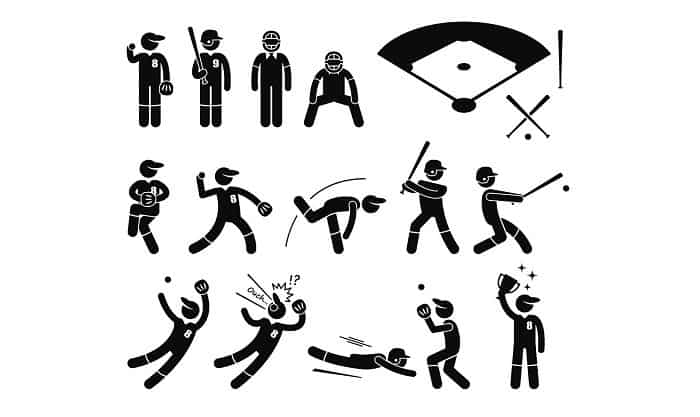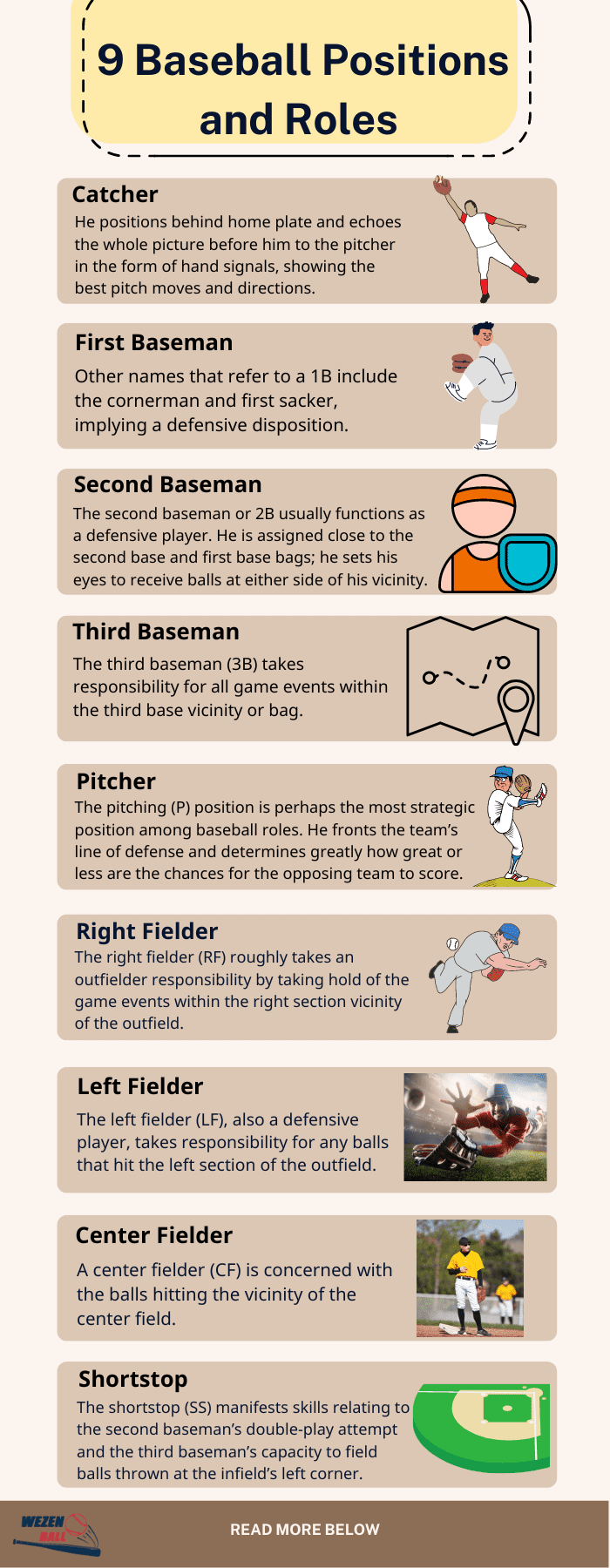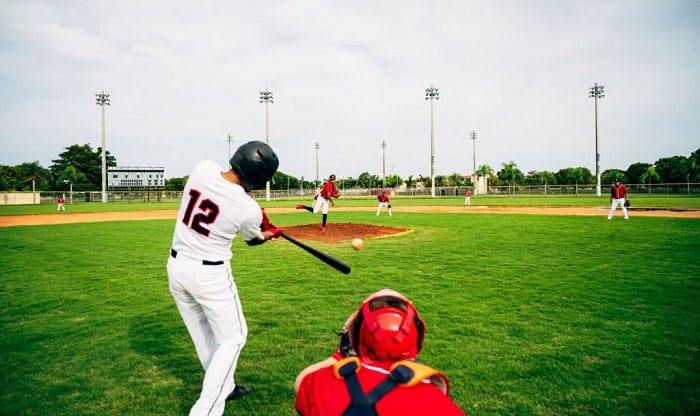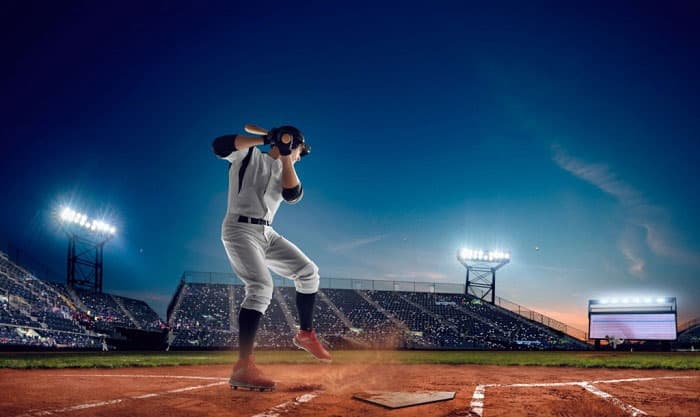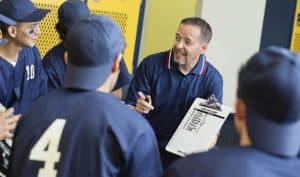Baseball cannot move forward without the essential designation of baseball positions and their corresponding roles among team members.
One side takes the offensive position; another side takes the defensive act. Each team member is to do the best of his skills to exploit his role and earn his team a higher score.
Getting a place in the team requires learning about the baseball positions and roles and other lineups.
Read on to experience baseball and its positions.
Contents
What Are the Defensive Baseball Positions & Roles?
The nine main positions in baseball are: catcher, first baseman, second baseman, third baseman, pitcher, right fielder, left fielder, center fielder, and shortstop.
- Catcher
A catcher (C) exists to support a pitcher. He is bound to accept that he is forever the wind beneath the pitcher’s wings, receiving all their pitches to maintain defense.
With that, he positions behind home plate and echoes the whole picture before him to the pitcher in the form of hand signals, showing the best pitch moves and directions. The pitcher cannot make sense of the vast pitching opportunities; the catcher’s job is to walk him through it.
A catcher must also develop quick wrist skills of “framing” a ball pitched in front of the home-plate towards a strike zone.
Ultimately, the catcher should aim to develop a genuine tandem with the pitcher—a good catcher-pitcher tandem results in instantaneous success at an 80% rate.
- First Baseman
The first baseman or known in short as 1B, ideally has to possess a tall physique, a powerful left-handed throw, and certain flexibility to receive, pick or scoop throws from other infielders, which are usually extra-low.
Other names that refer to a 1B include the cornerman and first sacker, implying a defensive disposition. Hitherto, he is assigned to field ground balls within the vicinity of 1st base. The 1st base is a crucial first-point, among three others, for baserunners to touch so that they can score.
- Second Baseman
The second baseman or 2B usually functions as a defensive player. He is assigned close to the second base and first base bags; he sets his eyes to receive balls at either side of his vicinity.
Since he is positioned to the right side of the infield, he will find it challenging to commit to a double play with high success. His first challenge begins when he receives a throw from his far-left where double plays mostly ignite.
As he reaches for the throw, he must make sure to cover the bag simultaneously to turn and face the third baseman. With his back on the approaching runner, he will have difficulty tending to the series of events without uncovering his bag.
His only sure moves for success at this point are to multitask between receiving the ball, doing a pivot, and side-stepping the runner in the shortest time possible.
- Third Baseman
The third baseman (3B) takes responsibility for all game events within the third base vicinity or bag.
Not only is he required to muster a sense of agility in both lateral and front-back covers, but he also has to carry an extensively strong and well-calculated throw for hurling the ball entirely across the diamond.
But, all these challenges do not end here as he had to react quickly to possible attempts on the home plate (as he is directly facing the home plate with the base on opposite and right-ward).
The third baseman plays at lateral proximity with the shortstop.
- Pitcher
The pitching (P) position is perhaps the most strategic position among the baseball roles. Consequently, he fronts the team’s line of defense and determines greatly how great or less are the chances for the opposing team to score.
Players who are focusing on the pitching position cannot do other roles. In addition, the position, having one of the most crucial roles in the game, requires time, effort, commitment, and concentration.
Thus, players who pitch don’t have to be concerned with other matters like hitting/batting.
One of the pitcher’s responsibilities is to cooperate with the catcher by developing chemistry, particularly in reading hand signals given by the catcher.
Eventually, once a pitcher connects the dots, including the catcher’s strategies, he will have to throw extensively strategic pitches.
Strategic, in this case, indicates that he can throw a batter out, keeping a base runner off as a result, and in the end, lose the opposing team’s chance to score.
Another job of the pitcher includes extending his range by protecting the first baseman’s base if he has to leave it to field a ball.
- Right Fielder
The right fielder (RF) roughly takes an outfielder responsibility by taking hold of the game events within the right section vicinity of the outfield.
Right fielders had to develop a strong intuition for quickly pulling in and picking the strongest fielder in the team’s designated outfield circle to throw the ball from the right field across the diamond and into the hot corner (third base).
However, he can’t just do this randomly; he must react first to a noted attempt by a base runner to advance to third base right-ward.
- Left Fielder
The left fielder (LF), also a defensive player, takes responsibility for any balls that hit the left section of the outfield.
However, depending on emerging situations, like when defense shifts occur, a left fielder has had to take over several bases throughout the outfield (including the left, center to right bases).
In short, he is to protect the entire outfield by diverting the ball into the infield when the need arises.
- Center Fielder
A center fielder (CF) is concerned with the balls hitting the vicinity of the center field.
When referring to the vicinity of the center fielder, it would help to refer to the outfield’s shallow and deep (outfield fence) parts. Having said it, the center fielder treads through these areas, taking them within their range of responsibility.
To ensure that, center fielders had to develop agility, speed, and strength for throwing balls across the outfield and back into the infield.
The center fielder, like most MLB positions, requires a certain degree of versatility to adapt to rapid defense shifts.
- Shortstop
The shortstop (SS) manifests skills relating to the second baseman’s double-play attempt and the third baseman’s capacity to field balls thrown at the infield’s left corner. In other words, a shortstop has to develop a quick response, speed, and extra-strength for throwing.
The shortstop is located in the middle of the second and third base bags. And so, it can take the responsibilities of both positions.
Most interestingly, in the past, shortstops were assigned at the lowest part of the batting lineup due to the players’ underwhelming batting performance. Fortunately, the case today is reversed thanks to the addition of highly-skilled batters into the group.
What Are the Baseball Positions’ Assigned Numbers?
The associated numbers for the baseball positions 1-9 (in order): one for the pitcher, two for the catcher, three for the first baseman, four for the second baseman, five for the third baseman, six for the shortstop, seven for the left fielder, eight for the center fielder, and nine for the right fielder.
So those are the baseball position numbers.
Conclusion
All nine baseball positions and roles can take either the offensive or defensive approach. The difference, in this case, begins with the strategic skills accorded by each team.
As mentioned earlier in the article, all nine positions function to set the space for competition, and consequently, bring about the team’s (its members) strategies for scoring in baseball.

A powerful swing and the ball is flying across the field, just one hit, and we might never forget the thrill it brings. I do not know about you, but I never do. Every baseball game is the chance to compete with others and cooperate with your teammate. It is among my biggest passions.



